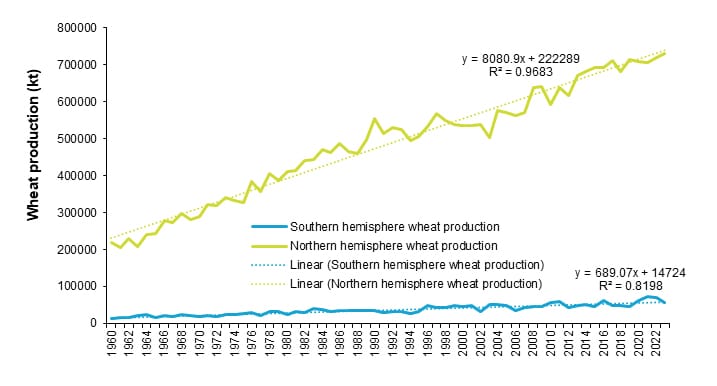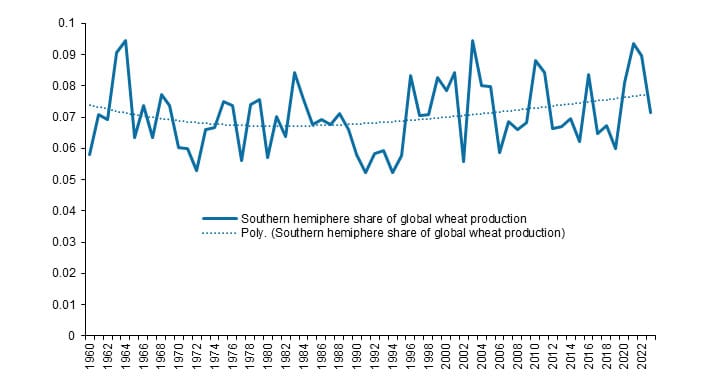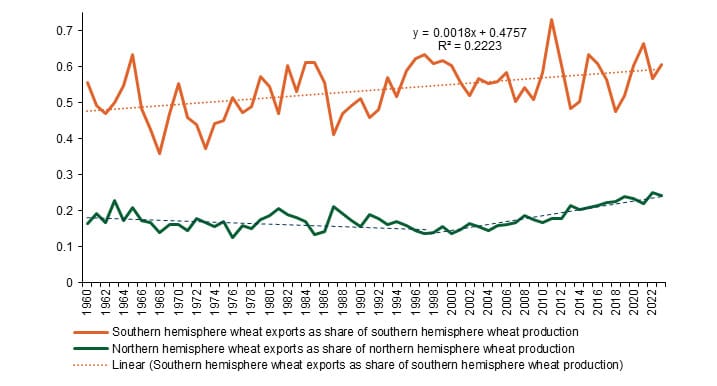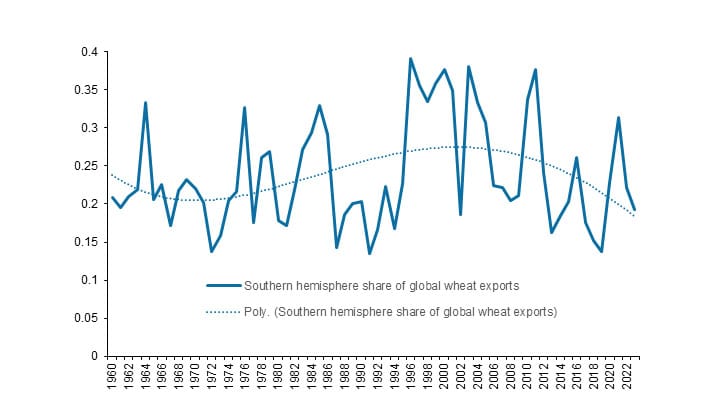Across the globe, wheat is a gift that keeps on giving. Farmers and scientists keep finding ways to lift wheat production. The northern hemisphere hugely dominates global wheat production. Such is the global demand for wheat that in recent decades in both hemispheres the share of wheat production that is exported has trended upwards. Wheat farmers across the world, especially those in the southern hemisphere, are increasingly exposed to export markets.
The history of wheat production in the northern hemisphere is very different from its history of barley production (see Horizons #97: “Barley heads south”). Remarkably, in a linear fashion, the northern hemisphere over many decades has increased its wheat production by around 8mmt per year (Figure 1). Similarly, the southern hemisphere adds another almost 690 kt of wheat production each year. Wheat production is a gift that keeps giving. Farmers and scientists continue to do a wonderful job of boosting wheat yields.

Yet because wheat production in the southern hemisphere has experienced a similar relative growth to that observed in the northern hemisphere, the southern hemisphere’s share of global wheat production continues to move in a band from 5% to 9% of global wheat production (Figure 2).

But although wheat exports from the southern hemisphere are a minor share of global wheat exports, nonetheless wheat exports from the southern hemisphere form a large and important growing proportion of southern hemisphere wheat production (Figure 3).
By contrast, up until the early 2000s wheat exports from the northern hemisphere formed a gradually diminishing share of its wheat production. However, since then, mostly due to enhanced wheat production in the Black Sea region, wheat exports from the northern hemisphere as a share of global production have trended upwards.

The impact of the enhanced Black Sea region wheat production since the 2010s, up until the outbreak of war in Ukraine in 2022 has caused some reduction in the southern hemisphere’s share of global wheat exports, although as shown in Figure 4, much volatility surrounds that share.

The global demand for wheat is such that in recent decades in both hemispheres the share of wheat production that is exported is trending upwards. Wheat farmers, especially those in the southern hemisphere, are increasingly exposed to export markets.
Expert grains industry analysis and commentary from AEGIC’s Economics and Market Insight Team on a range of big-picture topics that affect Australia’s export grains sector. Read the Horizons back catalogue.
AEGIC is an initiative of the Western Australian State Government and Grains Australia.


